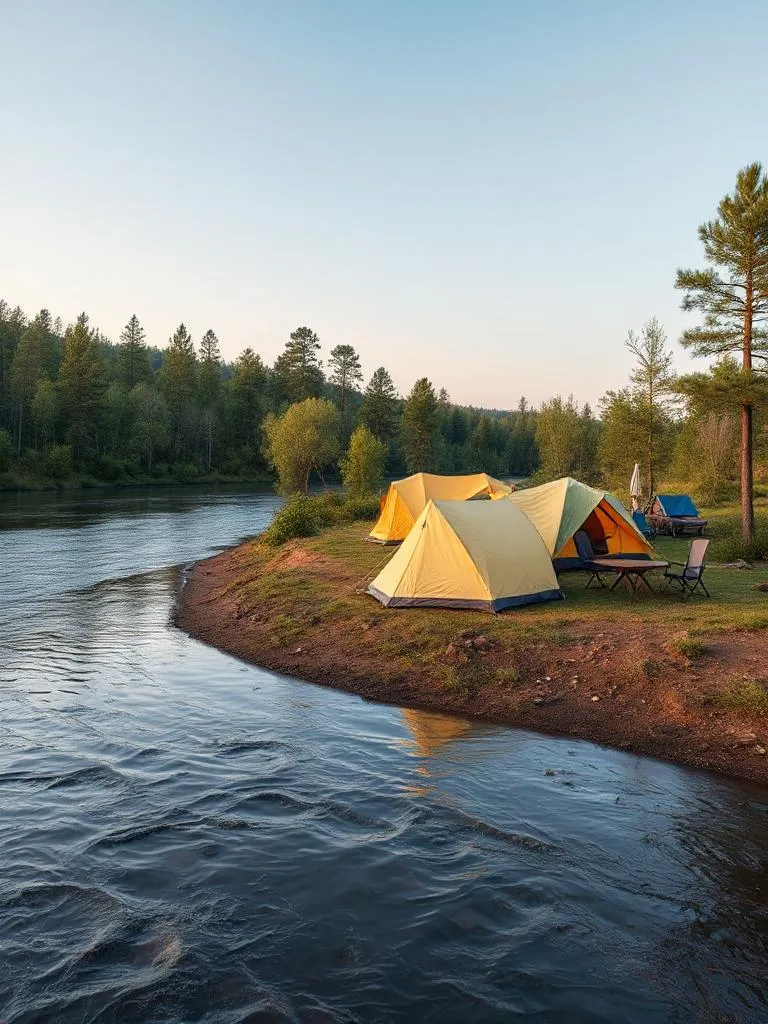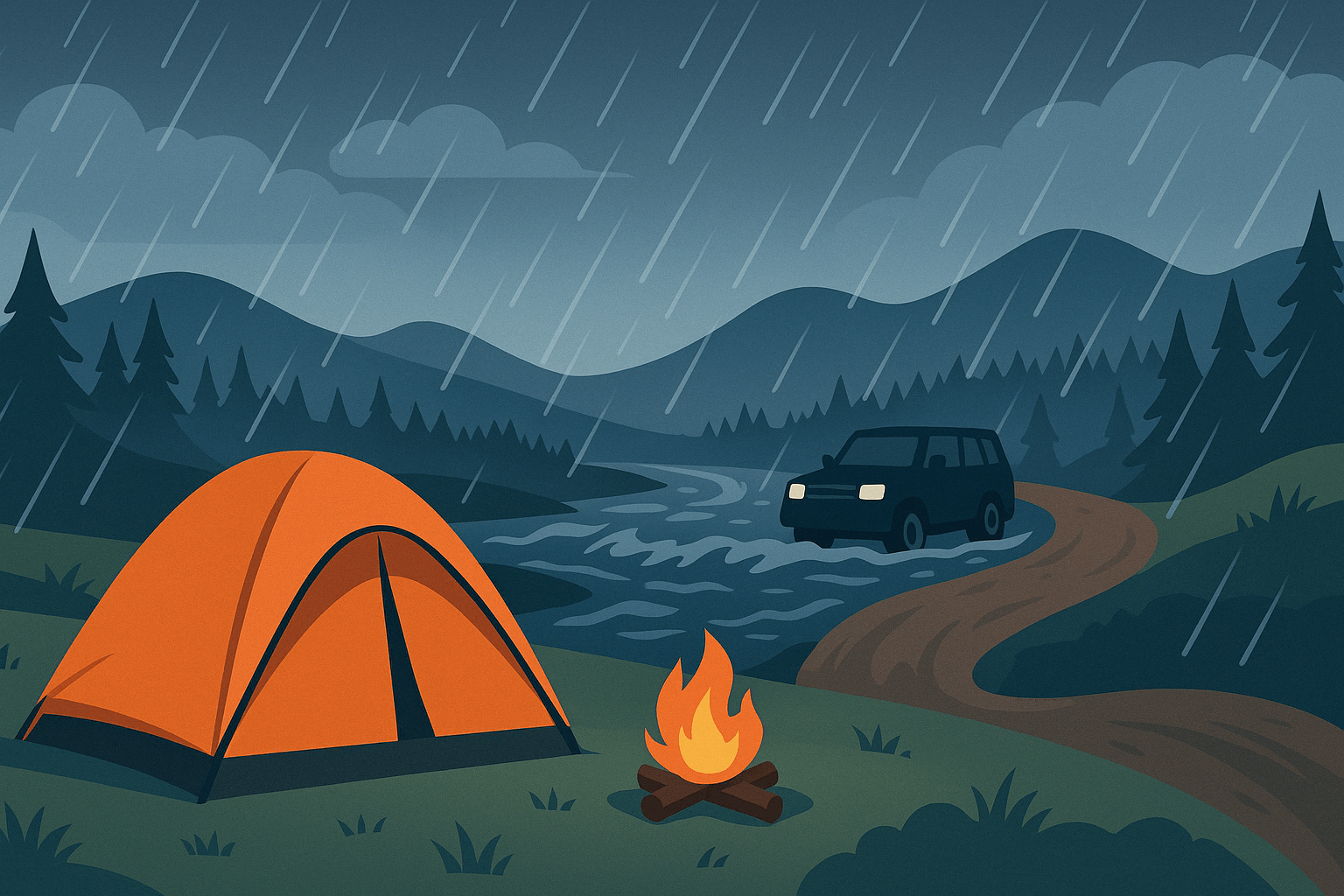Introduction
At 2 a.m., soaked to the bone and scrambling through ankle-deep mud, I realized I had just entered a masterclass in risk management. And I wasn’t in a boardroom—I was in a flooded Texas campsite.
Risk management isn’t just a business buzzword—it’s survival instinct. Over the years, I’ve camped through storms, floods, and one icy disaster that nearly turned me into a human popsicle. Each experience taught me something real about risk: how to assess it, how to plan for it, and what happens when you don’t.
Turns out, the same principles that keep you safe in the woods apply to running a business. Here are three uncomfortable (and occasionally ridiculous) outdoor mishaps that reveal surprisingly useful lessons in risk awareness, preparedness, and adaptability.
Lesson 1: Risk Awareness — The Washed-Out Road Incident
📍 Austin, TX, 1992 — A Rain-Soaked Escape
Spring camping with my coed fraternity sounded fun. It was—until a torrential downpour hit at 2 a.m., turning our peaceful riverbank into chaos. Water rushed into our tents, and someone turned on the car radio: flash flood warning.
The steep dirt road we came in on? Now a slick, muddy trap. Out of 15 vehicles, only five had 4x4s. Relying on my teenage years spent teaching myself to fishtail pickup trucks on dirt roads, I took the wheel of every car that needed help. It was muddy, nerve-wracking, and pure adrenaline.
Nine mud-spraying trips later, all cars were out—except one. A rear-wheel-drive “Jeep,” whose proud owner had insisted it could “handle anything.” Three failed attempts later, he tossed me the keys. One white-knuckle climb later, we were all safe.
🧠 Risk Management Takeaway
- Environmental risks are unpredictable. Flash floods, market crashes, and regulatory shifts can hit fast.
- Contingency planning is critical. Have a plan B—whether that’s a second route or a backup supplier.
- Experience matters. Leaders who’ve navigated storms before (literally or figuratively) can steer through crises with calm and skill.
Lesson 2: Preparedness Matters — The Gully-Washed Tent
📍 Upper Peninsula, Michigan, 2003 — A Rookie Setup Mistake
I arrived late, set up my tent in the dark, and went to sleep in what I thought was a quiet, flat spot. It was actually a gully. At 1 a.m., I woke up swimming. My gear? Soaked. My pride? Drenched. I packed up and checked into a hotel 3.5 hours away.
This one’s easy to map to business: bad site selection, rushed decisions, and no risk assessment. Whether it’s a physical location or a new product launch—if you don’t do your homework, you’ll pay for it.
🧠 Risk Management Takeaway
- Proper planning saves time and money. Quick decisions often lead to costly consequences.
- Risk assessments should be mandatory. Know the terrain—whether it’s the literal ground or market conditions.
- Exit strategies matter. Don’t get stuck in a bad place with no Plan B.
Lesson 3: Adaptability — The Ice-Encased Tent
📍 Cochise, AZ, 2005 — Underestimating the Cold
Camping at 5,000 feet in fall sounded fine… until the cold front hit. I missed the weather alert and spent the night frozen inside a three-season tent. My beanie, my sleeping bag, and the tent walls were all encased in ice. The next day, I bought a four-season tent. Lesson learned.
Markets shift just like weather. If you don’t anticipate change—or invest in tools that handle it—you’ll get frozen out too.
🧠 Risk Management Takeaway
- Conditions change fast. New competitors, tech disruption, and economic shifts can blindside you.
- Invest in long-term solutions. Don’t wait for a crisis to upgrade your systems or strategy.
- Failing to plan is planning to fail. Resilience isn’t luck—it’s preparation.
Conclusion
So what does camping have to do with business? Everything.
Each muddy misstep, soggy mistake, and frozen finger reminded me that risk management isn’t a process—it’s a mindset. Whether you're setting up a tent or scaling a company, your success depends on:
✅ Assessing risks before committing (flash floods or market downturns can strike fast)
✅ Preparing for the worst, even if you’re hoping for the best
✅ Investing in the right gear—be it tents or continuity plans
✅ Putting experienced leaders behind the wheel in times of crisis
✅ Staying flexible and ready to adapt
Because when things go sideways—and they will—the teams that are ready, steady, and willing to pivot are the ones who make it out intact.
🧭 Is Your Business Ready for the Storm?
- Do you have a current risk assessment plan?
- Can you pivot quickly if your strategy floods?
- Is your leadership team prepared for the unexpected?





